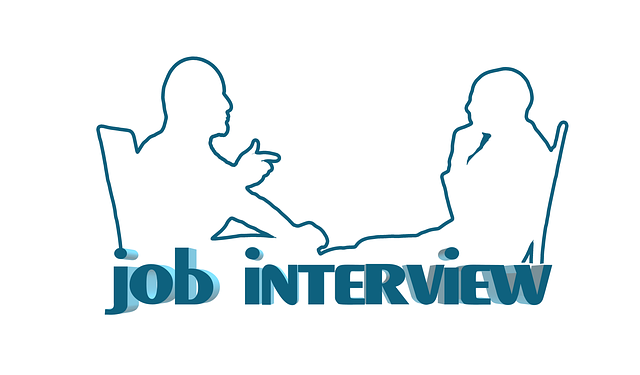In today's digital era, AI-powered chatbots transform sales by automating and personalizing interactions. They free up salespeople to focus on high-value tasks, streamlining lead nurturing and improving customer satisfaction. Chatbots offer 24/7 support, integrate with CRM systems, and provide data-driven insights, making them a powerful tool for account-based engagement. Implementing chatbots requires identifying pain points, choosing the right platform, designing natural conversations, training AI models, and monitoring KPIs to optimize performance and drive revenue growth.
In today’s digital age, account-based engagement is crucial for sales success. Discover how a chatbot can revolutionize your sales strategy by enhancing customer interactions and streamlining processes. This article explores the shift from traditional sales to chatbot-powered engagement, outlining key features and benefits of implementing these AI assistants. We provide a step-by-step guide on integration and offer essential metrics to measure the impact of chatbots on sales performance, making it an indispensable resource for sales teams embracing technology.
- Understanding Account-Based Engagement for Sales
- Traditional Sales vs. Chatbot-Powered Engagement
- Key Features of a Sales Chatbot
- Implementing Chatbots: A Step-by-Step Guide
- Measuring Success: Metrics and KPIs for Chatbots in Sales
Understanding Account-Based Engagement for Sales

In today’s digital era, account-based engagement for sales has evolved far beyond traditional methods. It involves a strategic and personalized approach to target specific accounts, understanding their unique needs and pain points. This tailored strategy ensures that sales teams can effectively reach decision-makers within these accounts, building stronger relationships and increasing the likelihood of conversion. A chatbot for sales teams plays a pivotal role in this process by automating and enhancing various stages of the sales funnel.
By leveraging AI workflow and chatbot marketing, sales teams can create an engaging, conversational experience that guides prospects through the buyer’s journey. These intelligent chatbots use natural language processing to gather information about account goals, challenges, and preferences, allowing for personalized recommendations and targeted content delivery. This not only improves customer satisfaction but also enables sales representatives to focus on high-value interactions, ultimately driving revenue growth.
Traditional Sales vs. Chatbot-Powered Engagement

In traditional sales engagement, the process often involves a back-and-forth communication between a customer and a salesperson, where leads are nurtured through various stages before converting into sales. This approach is time-consuming, requiring significant human interaction and effort. However, with the advent of AI automation, specifically through chatbots for sales teams, this dynamic has drastically changed. Chatbots powered by artificial intelligence assistants can handle initial customer interactions, providing instant responses and personalized experiences to prospects at scale.
By leveraging AI agents, businesses can streamline their sales processes, allowing human salespeople to focus on more complex tasks. This shift enables sales teams to optimize their time, targeting high-potential leads while the chatbot for sales manages routine inquiries and qualification tasks. As a result, customers benefit from faster response times and more efficient interactions, increasing the likelihood of positive outcomes.
Key Features of a Sales Chatbot

A chatbot designed for sales teams is a powerful tool that enhances account-based engagement and optimizes the customer journey. These intelligent assistants offer a range of key features, such as personalized interaction, 24/7 availability, and data-driven insights. By leveraging natural language processing (NLP) and machine learning algorithms, chatbots can understand customer queries and provide tailored recommendations, mirroring human-like conversations. This level of personalization boosts engagement by addressing individual needs and preferences, a strategy that’s especially effective in the competitive world of sales.
Furthermore, these chatbots streamline the lead generation process through interactive questionnaires and qualification scripts, mapping out buyer personas and segmenting leads based on their behavior. They can also integrate seamlessly with existing CRM systems, enabling sales teams to access valuable customer data within an ai workflow. This real-time synchronization ensures a smooth transition from chatbot interaction to face-to-face meetings or further communication using an ecommerce ai approach, ultimately driving more effective lead conversion and improved sales results.
Implementing Chatbots: A Step-by-Step Guide

Implementing Chatbots for Sales Teams: A Simple Guide
1. Identify Use Cases: Start by understanding pain points in your sales process and where a chatbot could provide value. Common areas include lead qualification, customer support, and product recommendations. For example, an AI agent can engage with prospects to gather initial information, qualifying leads faster and more efficiently.
2. Choose the Right Platform: Select a platform that aligns with your team’s needs and technical expertise. Consider options offering both rule-based and machine learning capabilities, allowing for flexibility as your sales strategies evolve. Integrating with existing CRM systems is crucial for seamless data flow and personalized interactions.
3. Design Conversational Flows: Create intuitive and natural conversation flows that mimic human interactions. Map out potential user journeys, including greetings, question-answering, and call-to-actions. Ensure the chatbot’s language is clear, concise, and tailored to your target audience, be it B2B or ecommerce customers.
4. Train and Test: Input relevant data and train the AI model using historical sales data, customer interactions, and industry knowledge. Continuously test and refine the chatbot’s responses, ensuring accuracy and context awareness. Regular updates based on user feedback will enhance its performance over time.
5. Integrate Across Touchpoints: Deploy your chatbot across various sales touchpoints, such as websites, social media platforms, and messaging apps. This omnichannel approach allows prospects to engage with your brand in their preferred channels, enhancing customer experience and increasing engagement rates.
6. Monitor and Optimize: Regularly track key performance indicators (KPIs) like lead conversion rates, response times, and user satisfaction scores. Analyze chatbot interactions to identify areas of improvement. Continuously updating and refining the AI agent’s capabilities ensures it remains an effective tool for your sales team.
Measuring Success: Metrics and KPIs for Chatbots in Sales

Measuring the success of a chatbot implemented for account-based engagement in sales is crucial for any business looking to optimize their AI agent’s performance. Key Performance Indicators (KPIs) should focus on metrics that align with sales goals and customer interactions. Conversion rates, for instance, offer valuable insights into how effectively the chatbot guides prospects through the sales funnel. By tracking conversations and outcomes, sales teams can identify areas where the AI workflow enhances engagement or requires adjustments.
Additionally, monitoring customer satisfaction scores and net promoter scores (NPS) is essential, as these metrics gauge the positive impact of chatbot interactions on client relationships. Analyzing the volume of qualified leads generated by the chatbot and its average handling time per query demonstrates its operational efficiency. Together, these KPIs provide a comprehensive view of how well the AI agent is fulfilling its role in supporting sales teams and ultimately driving revenue growth.
A chatbot that powers account-based engagement for sales represents a significant leap forward for sales teams. By automating initial customer interactions, providing 24/7 availability, and offering personalized content, these chatbots enhance lead qualification and accelerate the sales process. With the right features and implementation strategy, as outlined in this article, sales professionals can leverage chatbot technology to build stronger client relationships and drive higher conversion rates. Embrace this innovative approach to stay ahead in today’s competitive marketplace.
